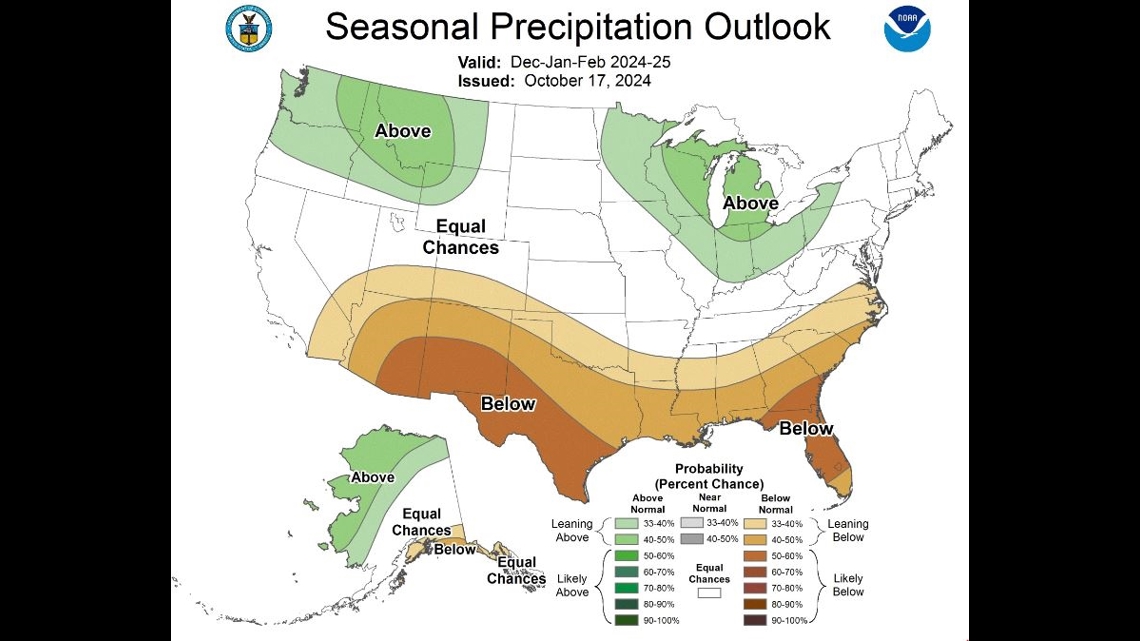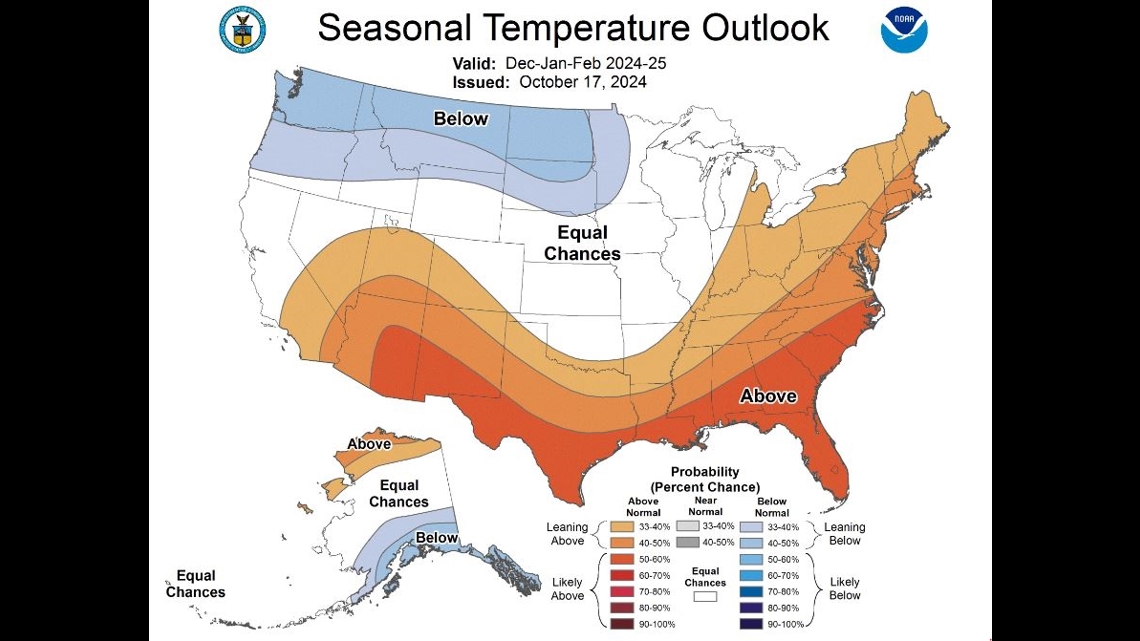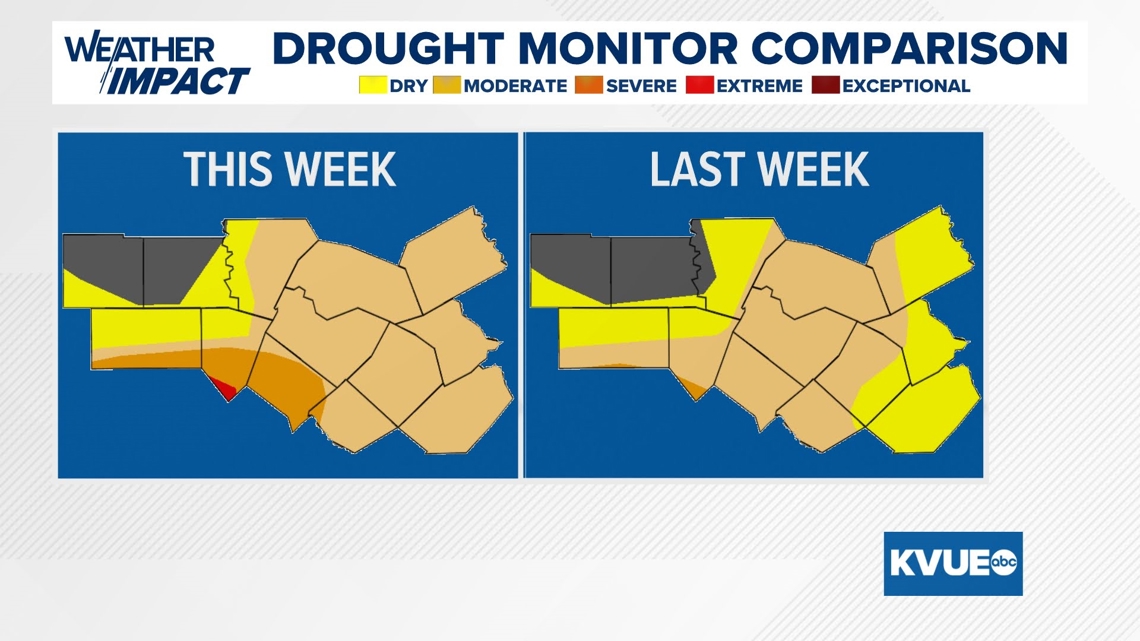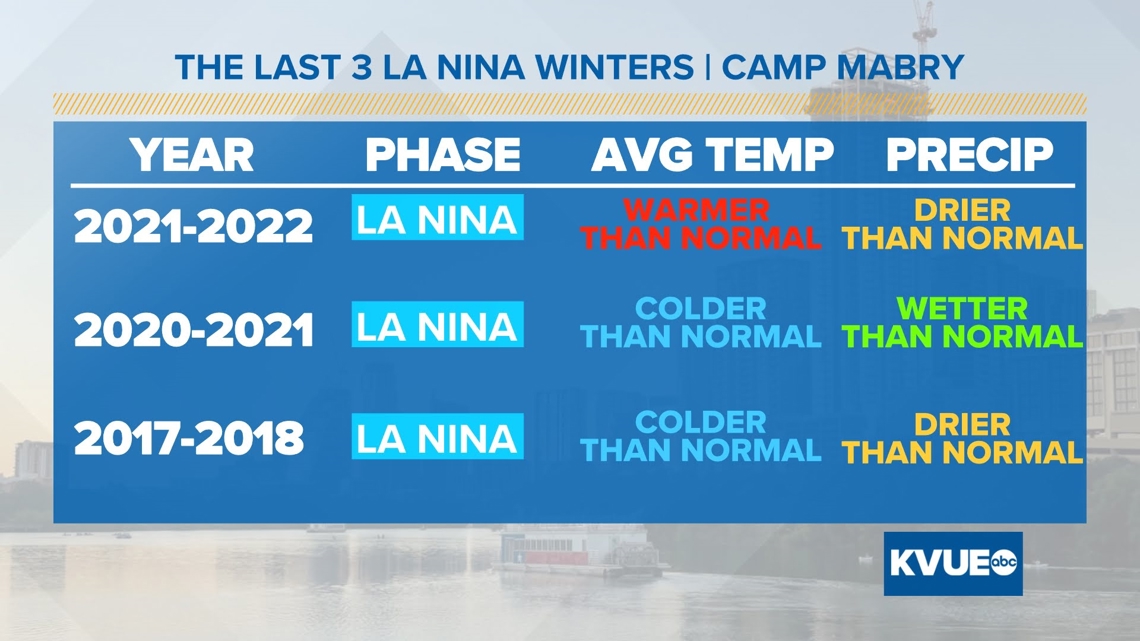AUSTIN, Texas — The National Oceanic and Atmospheric Association published their 2024-2025 Winter Outlook and it shows a less-than-exciting forecast for Texas.
Texas, along with southern portions of the United States, is expected to be warmer and drier than usual during this next season.
Austin is not only expected to see warmer and drier trends, but the confidence in such trends is high. For both precipitation and temperatures, Austin is within the boundaries of 50 to 60% probability.
This pattern will be majorly influenced by an expected northerly shift in the jet stream this winter. This will happen due to a large global weather phenomenon called El-Niño-Southern Oscillation or ENSO.
The phases of this process depend on warmer or cooler sea-surface temperatures in the equatorial Pacific. "El Niño" is present when water temperatures are above average. "La Niña" is present when cooler than normal water is recorded.
Seasonal Precipitation Outlook


Seasonal Temperature Outlook


Climate scientists have been able to characterize how La Niña generally impacts the United States during active years.
We see a northerly shift in the location of the Pacific jet stream, which brings abundant moisture to our neighbors in the Pacific Northwest.
As it shifts further north, it will also be influenced by the Polar jet stream closer to the Arctic, producing wet, cool, and more active weather across the northern Plains and Midwest.


Subsequently, this leaves the southern half of the U.S. essentially "out of the loop" in a sense, leaving Texas with drier and warmer conditions compared to a regular year.
As the past few weeks of fall have gotten underway, Austin has yet to see much rainfall. The winter prediction will be bad news for the worsening drought. The most recent drought monitor update from Oct. 17 compared to Oct. 10 increased drought by 14% across our area.
Central Texas Drought Monitor changes


How the last La Niña winters compare
In regards to the previous La Niña winters in Austin, here is a look at the findings from the last three seasons.
Two out of the last three times, precipitation has been drier than normal. However, you'll also note the colder-than-average temperatures have appeared twice too.





